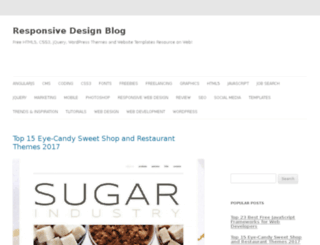Responsive Design Blog -
Page Load Speed
11.4 sec in total
First Response
3.6 sec
Resources Loaded
7.1 sec
Page Rendered
740 ms

About Website
Welcome to responsivedesignblog.com homepage info - get ready to check Responsive Design Blog best content for India right away, or after learning these important things about responsivedesignblog.com
Free HTML5, CSS3, jQuery, WordPress Themes and Website Templates Resource on Web!
Visit responsivedesignblog.comKey Findings
We analyzed Responsivedesignblog.com page load time and found that the first response time was 3.6 sec and then it took 7.8 sec to load all DOM resources and completely render a web page. This is a poor result, as 85% of websites can load faster.